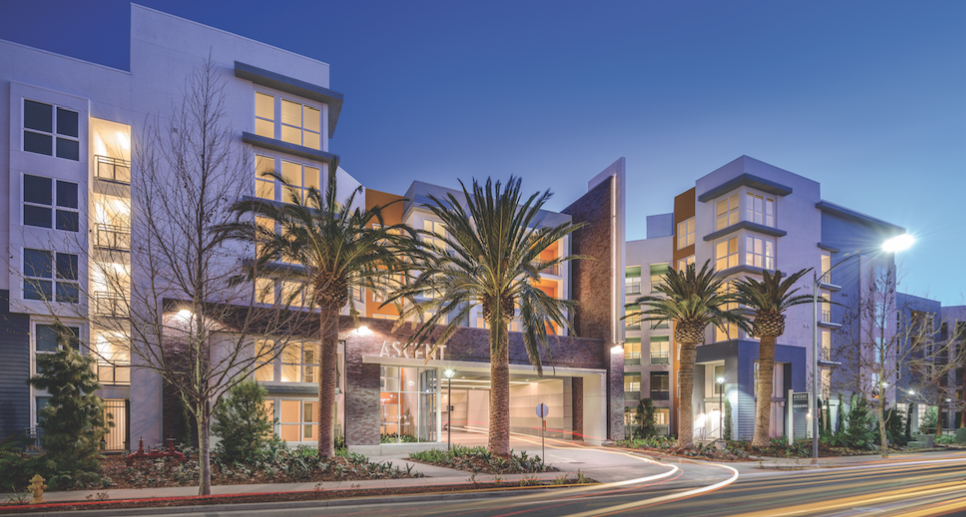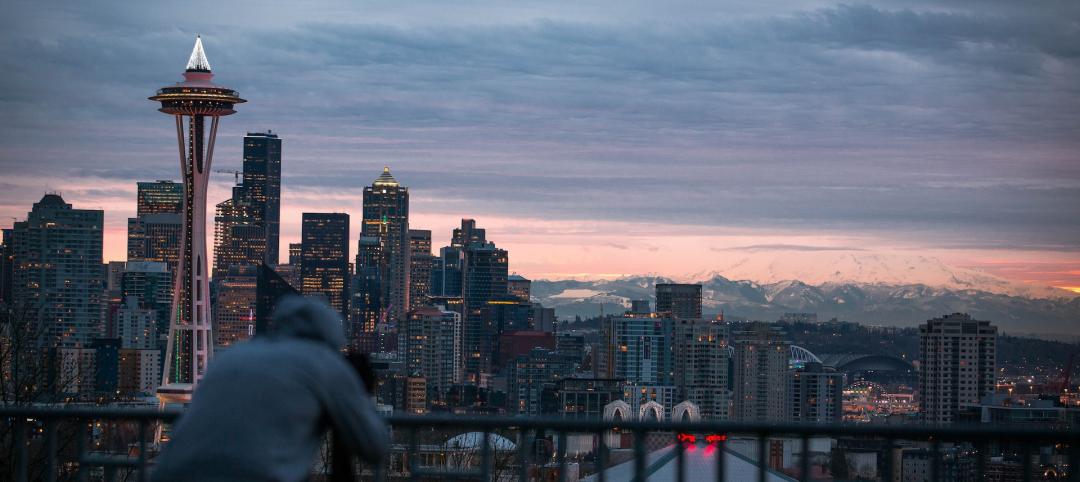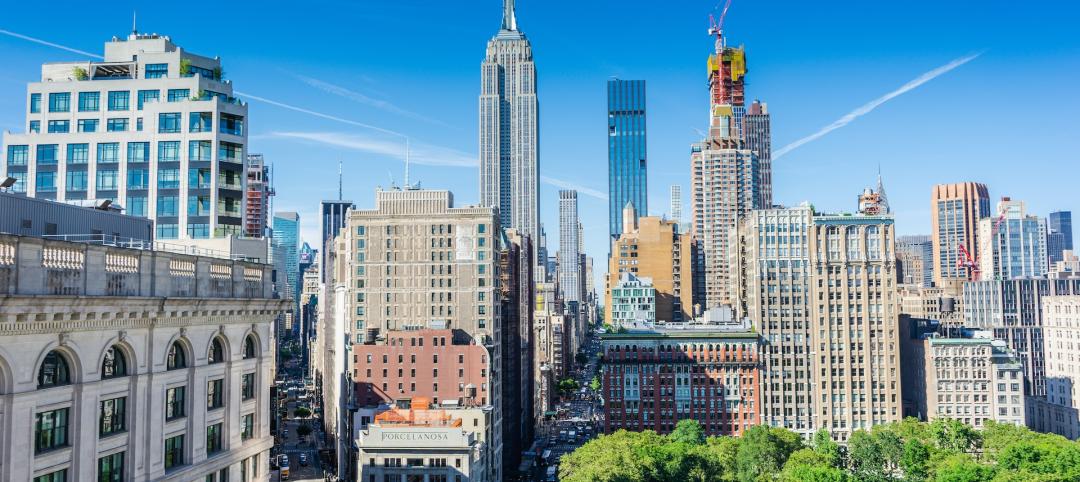Great design should celebrate a project’s connection to its place and provide an aesthetic that unifies the entire space. For Ascent Apartments, a luxury apartment complex in the epicenter of California’s Silicon Valley, the architecture firm responsible for the design was inspired by the site’s unique role in the history of the Information Age.
The team at Architects Orange, based in Orange, Calif., formed an immediate connection with the 10.8-acre site in San Jose. The 332-acre parcel on which it is located is where IBM manufactured the world’s first hard disc drives in 1956. The design for the 650-unit complex was inspired by the information technology manufacturing facilities and mid-century office buildings that once covered the campus.
Hitachi Global Storage Technologies acquired the entire property when it merged with IBM in 2002. The current owner of the Ascent site, Shea Properties, and Canadian investment partner Ivanhoé Cambridge have made the apartment complex an integral part of the 172-acre Cottle Transit Village, a transit-oriented development that encompasses two retail/commercial centers, green space and recreation areas, and more than 3,000 homes in adjacent neighborhoods. Last year, Ascent won a Gold award in the National Association of Home Builders’ Best in American Living Awards.
ASCENT APARTMENTS
PROJECT TEAM
Client: Shea Properties
Architect: Architects Orange
Interior designer: Style Interiors
Structural engineer: Van Dorpe Chou
Civil engineer: Carlson, Barbee & Gibson Inc.
Mechanical engineer: LDI Mechanical
Electrical engineer: IDS Group
Plumbing engineer: Parks Mechanical
Landscape architect: BrightView Design Group
General contractor: Brown Construction
“It has a clean architectural vocabulary that pays homage to the mid-century office buildings on the campus,” says RC Alley, Lead Partner of the multifamily and mixed-use practice at Architects Orange.
The apartments, which range in size from 704 to 1,575 sf, are contemporary and upscale in design. Units feature nine-foot ceilings with abundant natural light and private patios or balconies. Wood-plank flooring flows throughout the units.
The Architects Orange team was shooting for a European feel, particularly for the kitchens. “We designed a kitchen that’s more compact,” says Alley. “A lot of people who live in these units don’t do a lot of cooking, so why have a big, separate space?”
Beyond the kitchen, the designers specified several elements that reimagine mid-century modern industrial style, notably metal mesh railings and the use of a recurring L-shape configuration that starts in the entryway and continues through various elements of the interior and exterior and act as a visual offset. Another mid-century touch: the illuminated vertical blades on the exterior, which serve as a unifying element and wayfinding tool, says Alley. The blades heighten the visibility of the complex from the adjacent freeway off-ramp.
Yet another feature that evokes the high-tech legacy of the site is a dramatic two-story reinforced fiber cement panel that dominates the leasing office lobby. The Architects Orange team took its inspiration for this feature from the iconic IBM punch (or “punched”) cards that early programmers used to encode data. The visual effect, says Alley, speaks to prospective tenants, many of whom work in high-tech jobs.
Ascent’s elevations benefit from a combination of materials: a smooth-finish exterior plaster, fiber siding, prefinished steel awnings that provide a horizontal element above the windows, and brick. “We added the brick because it has a warm and textural feeling, but we tried to use it in a more contemporary manner,” says Ed Cadavona, a Partner at Architects Orange.
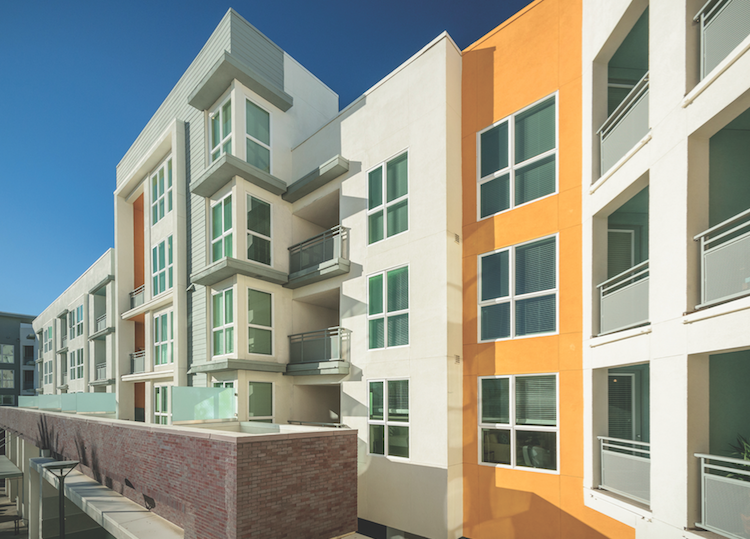 Architects Orange used a variety of materials in the elevation, including stucco, brick, metal, and horizontal siding. Pops of color evoke the feel of a California resort. Note the “eyebrows” above the corner windows and stairwells, which add texture to the space. The offset panes in the windows pay tribute to the punch cards that were used at the dawn of the Information Age. Translucent, sand-blasted panels enhance privacy on the patios of this high-density project.
Architects Orange used a variety of materials in the elevation, including stucco, brick, metal, and horizontal siding. Pops of color evoke the feel of a California resort. Note the “eyebrows” above the corner windows and stairwells, which add texture to the space. The offset panes in the windows pay tribute to the punch cards that were used at the dawn of the Information Age. Translucent, sand-blasted panels enhance privacy on the patios of this high-density project.
The use of wide composite windows and the incorporation of top-level loft apartments help vary the roof line to differentiate Ascent from nearby residential developments.
The architects found an innovative way to achieve the corner windows that help define the mid-century modern style of the buildings.
“Vinyl windows can get very expensive if you don’t buy standard ones,” says Alley. “We had the manufacturer put them together so they read as one piece. It has a nice rhythm. It has the punch card look without making the windowpanes look too small. We used an asymmetrical approach so it doesn’t look too plain.” The designers used vinyl windows throughout, except in the leasing area, where they specified a storefront system.
CREATING A TRANSIT-ORIENTED RESORT
Ascent Apartments is one of five projects designed by Architects Orange in Cottle Transit Village, Silicon Valley’s largest mixed-use, transit-oriented infill project. Kaiser Hospital and IBM Research are nearby. The Blossom Hill stop provides Caltrain rush-hour service to Diridon Station in downtown San Jose, with links to Amtrak and San Jose International Airport. Cottle Light Rail offers service to downtown San Jose, with connections to Santa Clara, Mill Valley, and other Silicon Valley locales.
But this is still automobile-crazy California, and the site hugs a busy freeway off-ramp. To buffer the complex from the roadway, Architects Orange and landscape architect BrightView Design Group incorporated lush landscaping along the walled perimeter, created an extensive walking path, and used plant materials to dampen the noise. Smaller park areas provide quiet enclaves throughout the site. The designers created a sense of visual distancing with pops of vibrant color in everything from the outdoor seating to exterior wall panels.
The five-story mid-rise project is structured in two buildings that wrap around parking in the center, as opposed to the more standard podium design with residential components atop a parking structure. This design compressed the footprint and allowed the project to achieve a density of just over 60 units/acre.
The wrap form also provided the framework for Ascent’s two most dominant features. The first is the entryway, an opulent porte cochère with vehicular lobby that features an atrium that lets light come through as you proceed. Cadavona describes the effect: “It transforms an ordinary parking structure into a grand sense of arrival for a resort feel.”
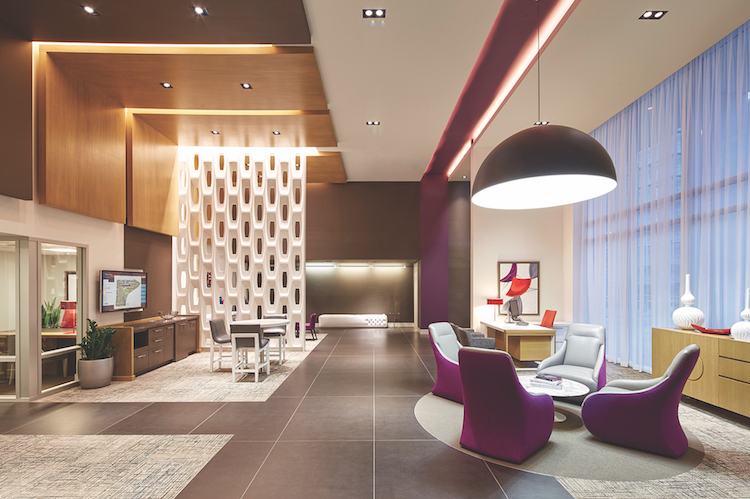 The designers’ L-shape architectural motif is evident in both the overhead wood panels and the violet stripe that runs the length of the leasing office lobby. The dramatic two-story perforated white panel, made of reinforced fiber cement, is another homage to the 1960s-era IBM punch card.
The designers’ L-shape architectural motif is evident in both the overhead wood panels and the violet stripe that runs the length of the leasing office lobby. The dramatic two-story perforated white panel, made of reinforced fiber cement, is another homage to the 1960s-era IBM punch card.
That sense of opulence is consistent with the vision Shea Properties and Ivanhoé Cambridge had for the project. “They wanted the look and feel of a high-end resort with a large amenity space,” Alley says. “It had to be unlike anything else in the area.”
The second dominant component is a half-acre park dominated by a large, resort-style saltwater pool and spa. The park features an outdoor gaming area, a tot lot, a bark park, and fireplaces. The community offers study pods, workspaces, a bicycle “kitchen” where you can fix your bike, a fitness center, a residence café, and a high-tech gaming room. “All those amenities are clustered around this green space,” says Cadavona.
“We wanted a walking trail that would create a sense of community in a high-density project,” Cadavona says. “You come out of your unit and the grand open space is prevalent throughout.”
A major gathering place of the central open space is the outdoor kitchen, which is supplied with grills, a pizza oven, and a fireplace, all located under a tensile structure with a large dining table and flat-screen TVs.
“We wanted to tie in this resort feel,” says Cadavona. “The buildings are very modern, with hard edges, and then there’s this soft tensile structure. Your eye kind of wanders around and goes to that structure.”
Every element of the buildings’ design comes into play to give the project a distinctive look and feel, Cadavona says. “All the textures—the brick, the metal awnings, the landscaping—all come into play to give it a unique character. The very horizontal building, lined up with palm trees, gives it that California casual but high-end feel.”
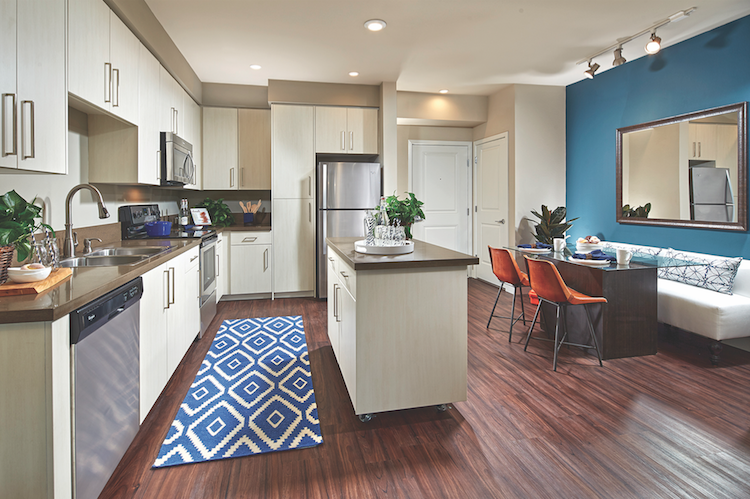 Sophisticated architectural cabinetry and quartz countertops accent the kitchens. Recessed lighting fixtures in the kitchen are complemented by simple pendants above the islands and track lighting over the dining area. “We wanted it to be consistent with the mid-century modern look and feel,” says Architect Orange’s RC Alley. “It’s a more subtle approach, and the recessed lights emphasize the openness of the floor plan.”
Sophisticated architectural cabinetry and quartz countertops accent the kitchens. Recessed lighting fixtures in the kitchen are complemented by simple pendants above the islands and track lighting over the dining area. “We wanted it to be consistent with the mid-century modern look and feel,” says Architect Orange’s RC Alley. “It’s a more subtle approach, and the recessed lights emphasize the openness of the floor plan.”
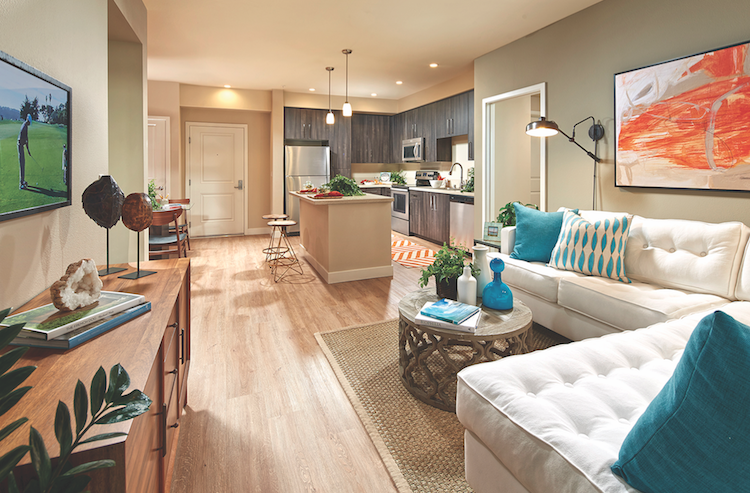 Apartments at Ascent have a contemporary, European look and feel. Design elements include open floor plans with wood plank flooring throughout and simple light fixtures. Note how the refrigerator is framed by the wall, soffit, and cabinetry. Here, the kitchen cabinetry contrasts in color and style with the floating island.
Apartments at Ascent have a contemporary, European look and feel. Design elements include open floor plans with wood plank flooring throughout and simple light fixtures. Note how the refrigerator is framed by the wall, soffit, and cabinetry. Here, the kitchen cabinetry contrasts in color and style with the floating island.
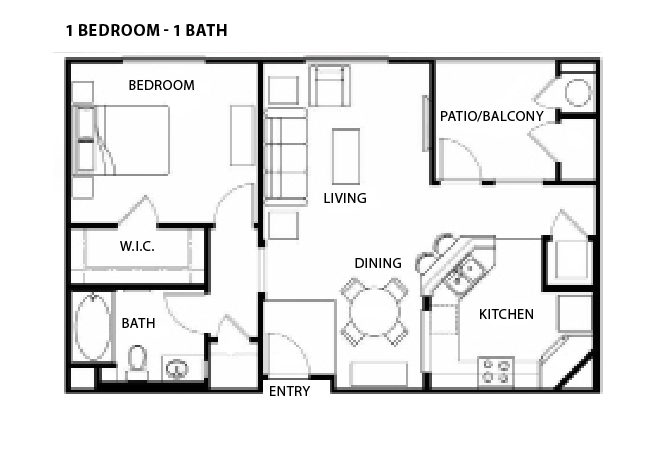
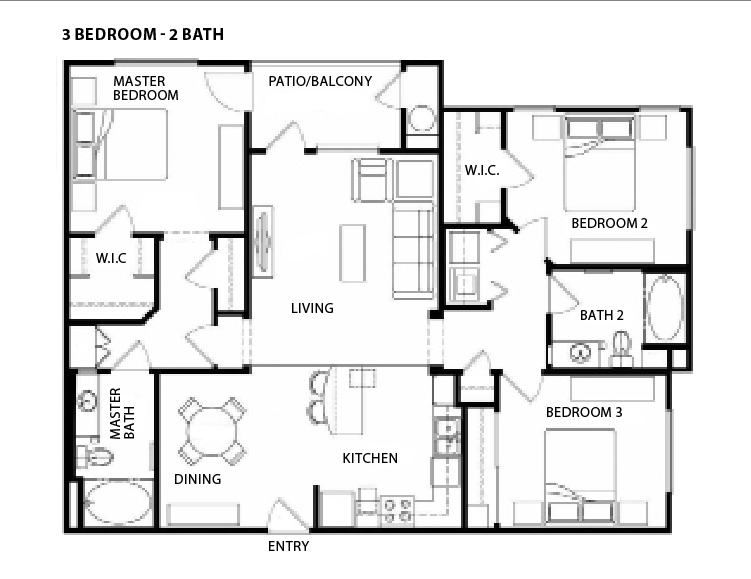
Related Stories
Multifamily Housing | Mar 31, 2023
EV charging stations in multifamily housing
Ryan Gram, PE, EV Charging Practice Leader at engineering firm Kimley-Horn, provides expert advice about the "business side" of installing EV charging stations in apartment and mixed-use communities. Gram speaks with BD+C Executive Editor Robert Cassidy.
Multifamily Housing | Mar 24, 2023
Washington state House passes bill banning single-family zoning
The Washington state House of Representatives recently passed a bill that would legalize duplexes or fourplexes in almost every neighborhood of every city in the state.
Multifamily Housing | Mar 24, 2023
Momentum building for green retrofits in New York City co-ops, condos
Many New York City co-op and condo boards had been resistant to the idea of approving green retrofits and energy-efficiency upgrades, but that reluctance might be in retreat.
Legislation | Mar 24, 2023
New York lawmakers set sights on unsafe lithium-ion batteries used in electric bikes and scooters
Lawmakers in New York City and statewide have moved to quell the growing number of fires caused by lithium-ion batteries used in electric bikes and scooters.
Multifamily Housing | Mar 24, 2023
Multifamily developers offering new car-free projects in car-centric cities
Cities in the South and Southwest have eased zoning rules with parking space mandates in recent years to allow developers to build new housing with less parking.
Multifamily Housing | Mar 24, 2023
Coastal multifamily developers, owners expect huge jump in insurance costs
In Texas and Florida, where Hurricane Ian caused $50 billion in damage last year, insurance costs are nearly 50% higher than in 2022.
Multifamily Housing | Mar 24, 2023
Average size of new apartments dropped sharply in 2022
The average size of new apartments in 2022 dropped sharply in 2022, as tracked by RentCafe. Across the U.S., the average new apartment size was 887 sf, down 30 sf from 2021, which was the largest year-over-year decrease.
Geothermal Technology | Mar 22, 2023
Lendlease secures grants for New York’s largest geothermal residential building
Lendlease and joint venture partner Aware Super, one of Australia’s largest superannuation funds, have acquired $4 million in support from the New York State Energy Research and Development Authority to build a geoexchange system at 1 Java Street in Brooklyn. Once completed, the all-electric property will be the largest residential project in New York State to use a geothermal heat exchange system.
Urban Planning | Mar 16, 2023
Three interconnected solutions for 'saving' urban centers
Gensler Co-CEO Andy Cohen explores how the global pandemic affected city life, and gives three solutions for revitalizing these urban centers.
Building Tech | Mar 14, 2023
Reaping the benefits of offsite construction, with ICC's Ryan Colker
Ryan Colker, VP of Innovation at the International Code Council, discusses how municipal regulations and inspections are keeping up with the expansion of off-site manufacturing for commercial construction. Colker speaks with BD+C's John Caulfield.


